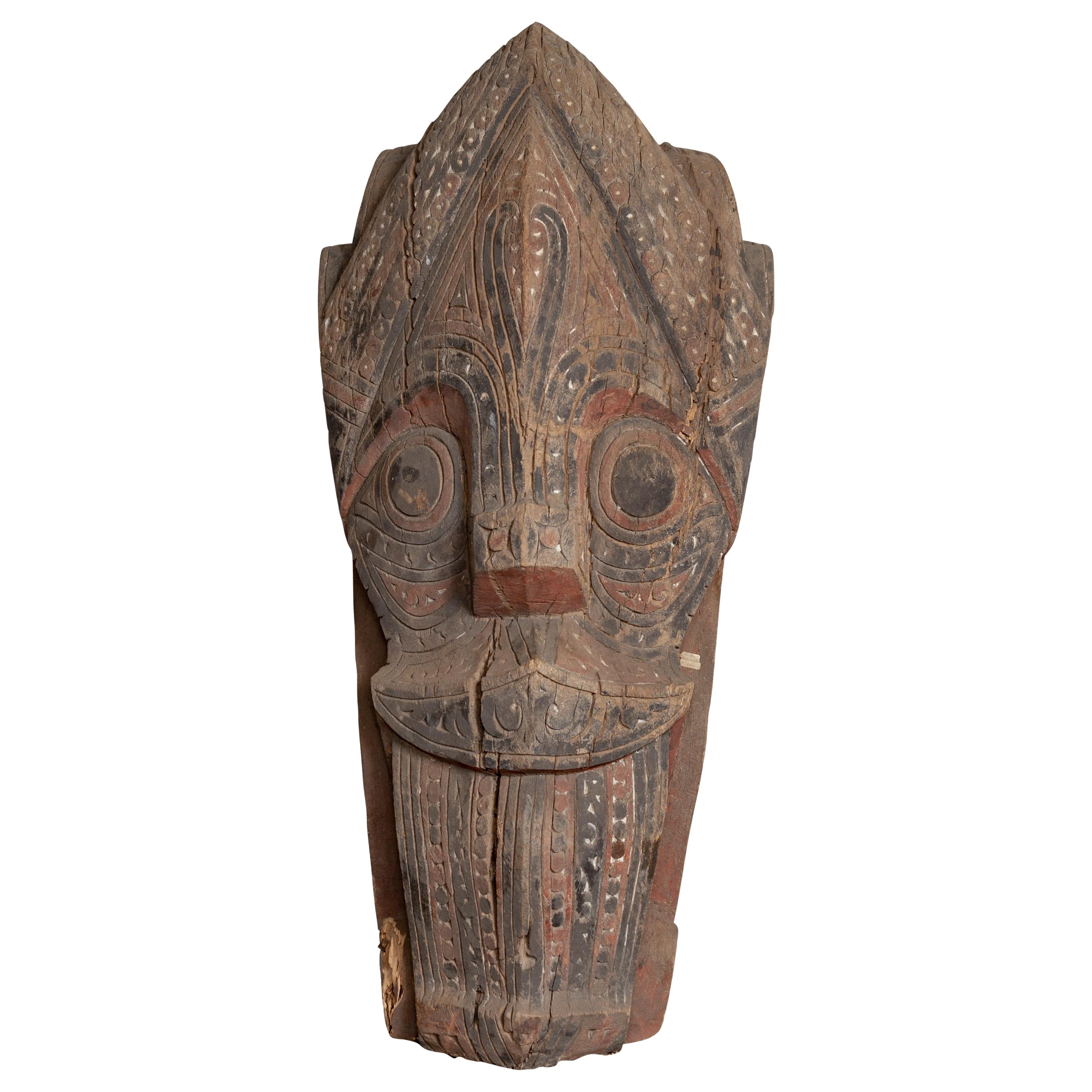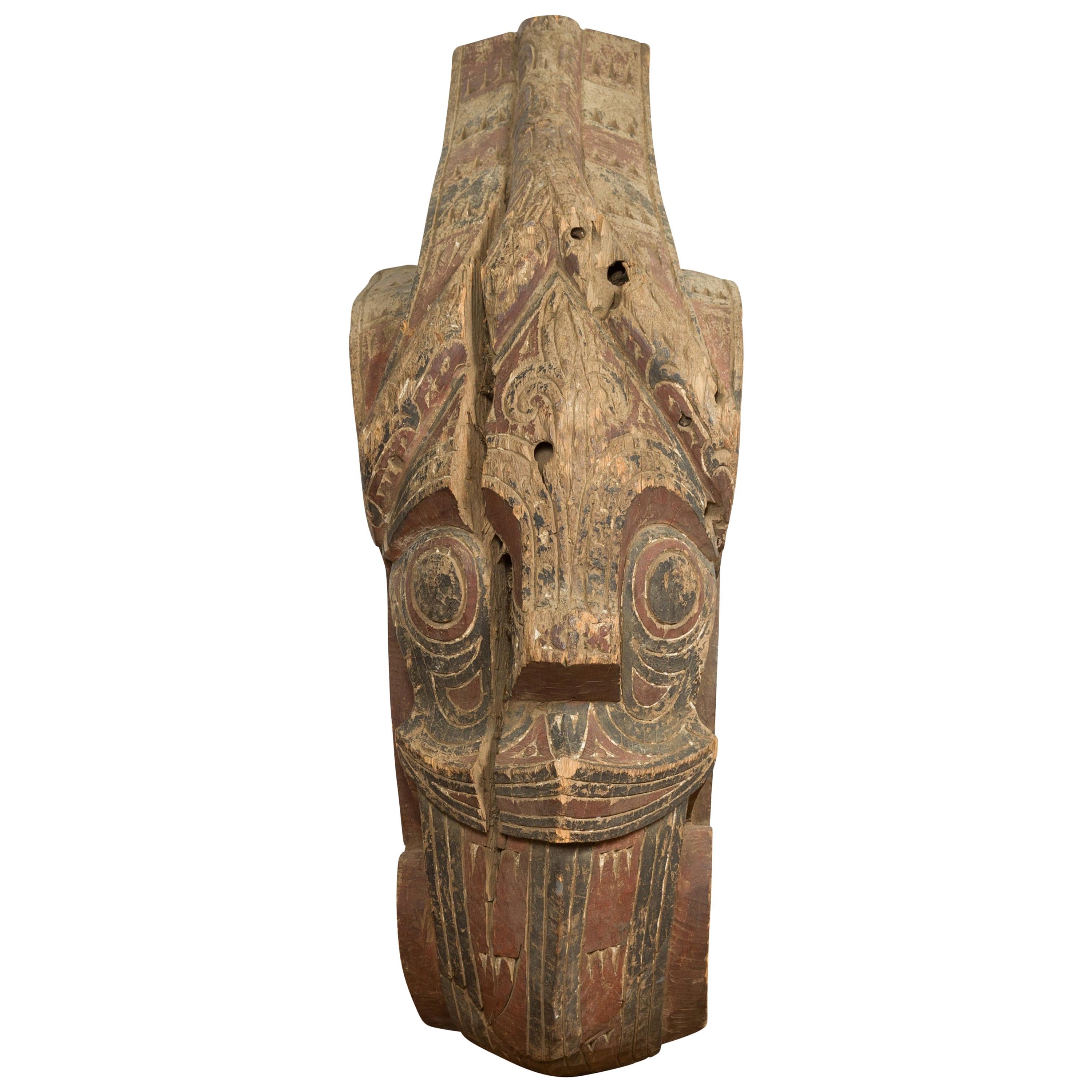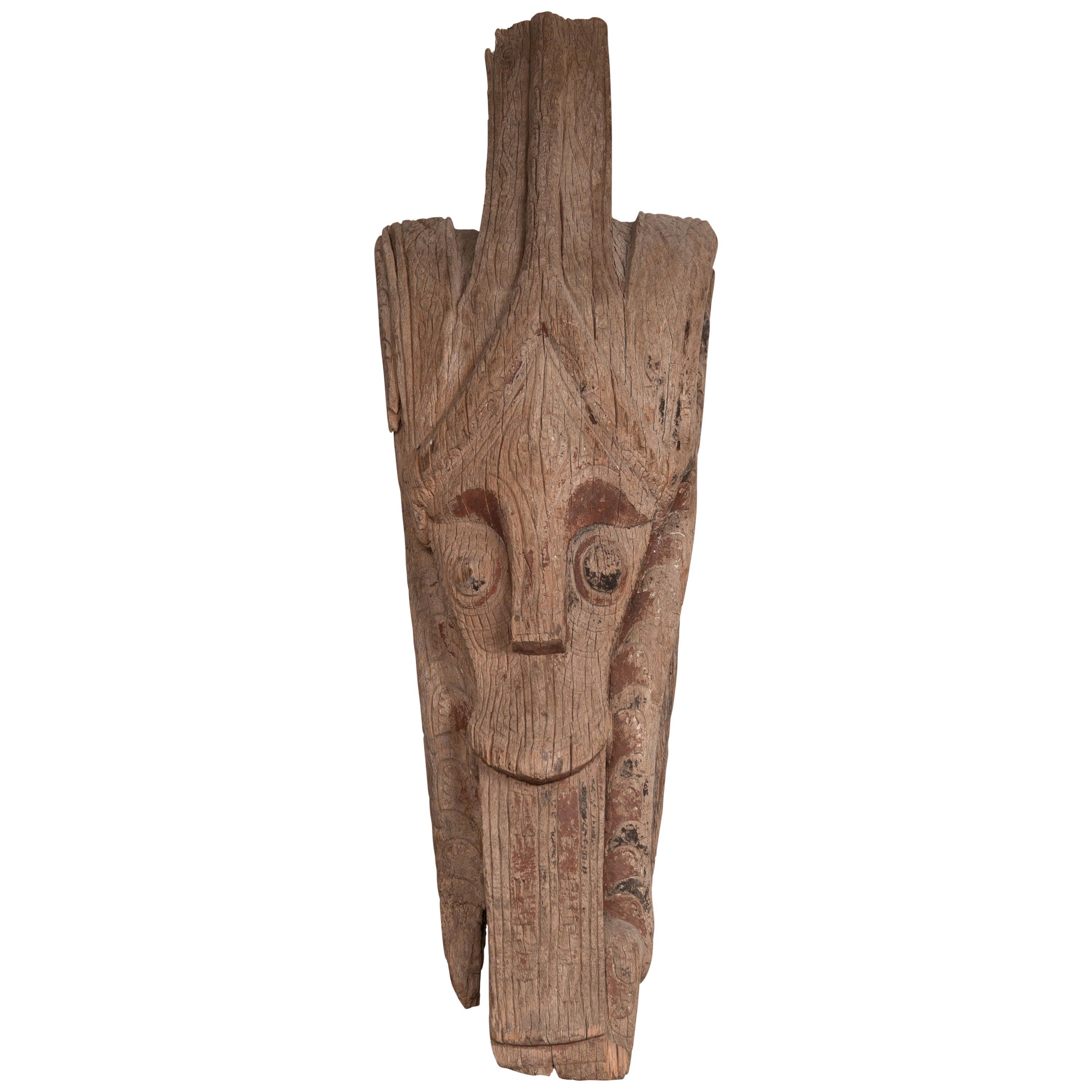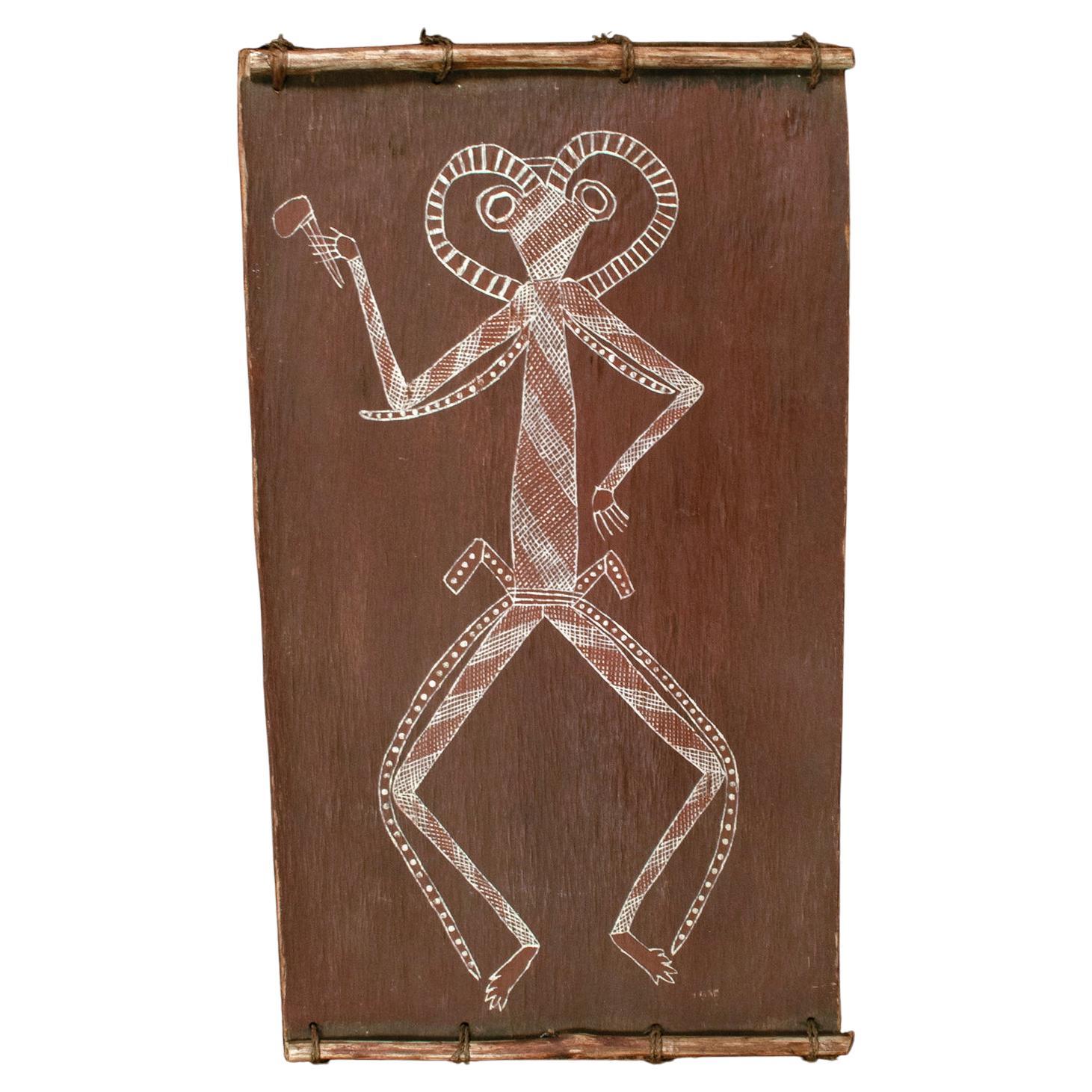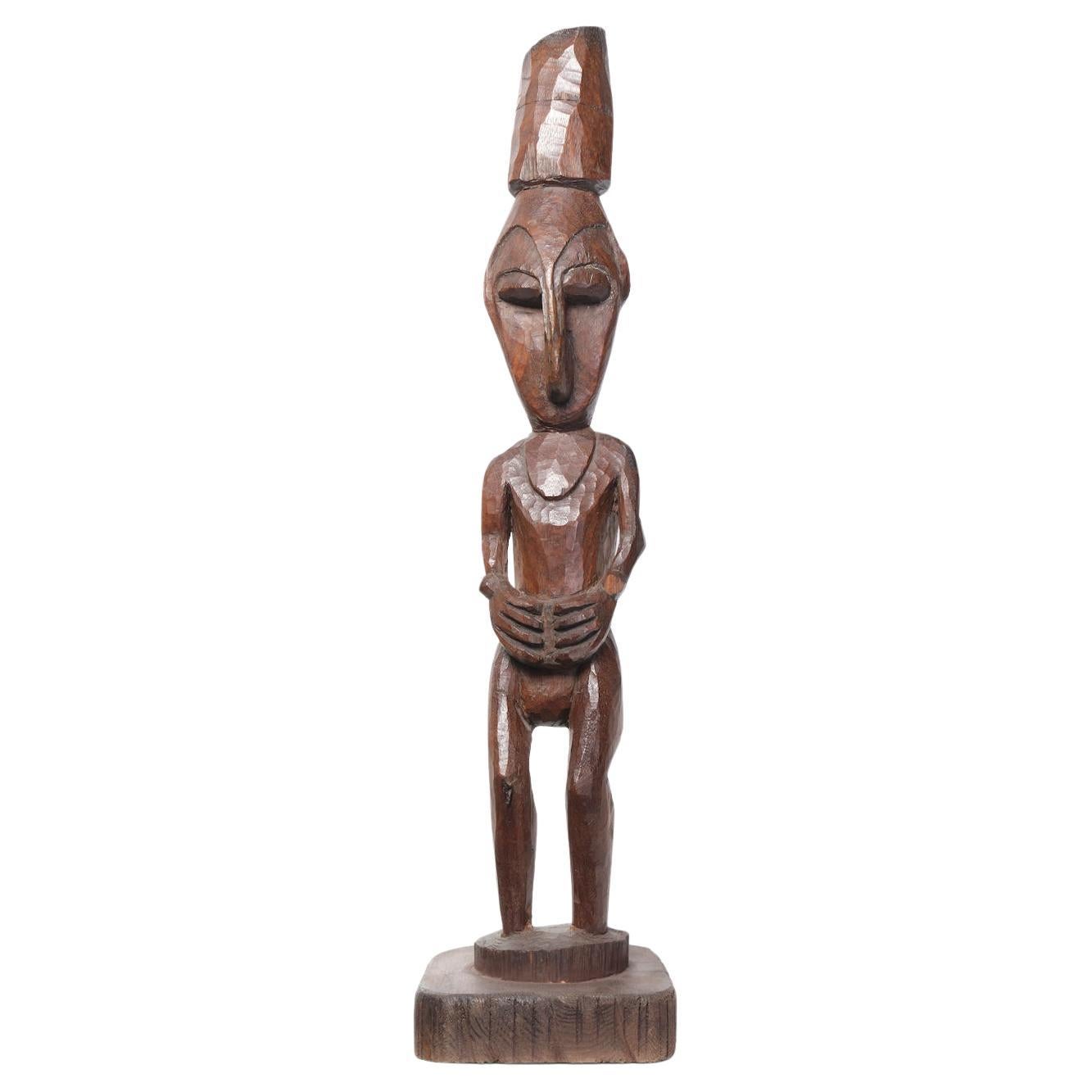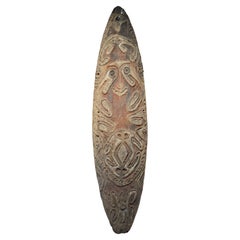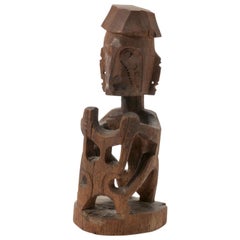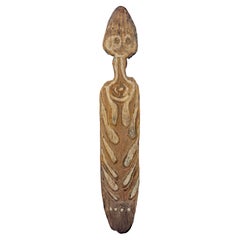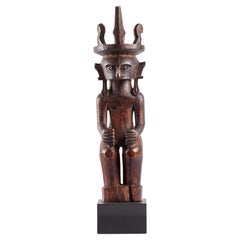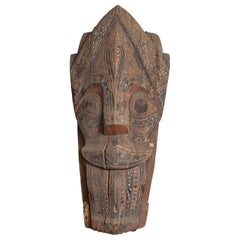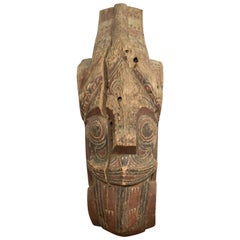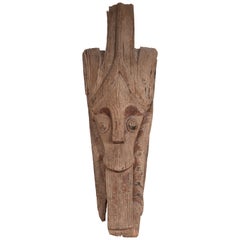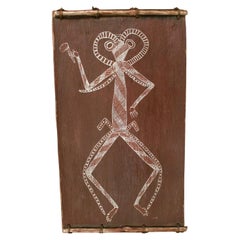Items Similar to A Sepik 'panggal' sago spathe or tree bark painting of an ancestral figure
Want more images or videos?
Request additional images or videos from the seller
1 of 2
A Sepik 'panggal' sago spathe or tree bark painting of an ancestral figure
$13,599.19
£10,054.06
€11,400
CA$18,705.48
A$20,792.30
CHF 10,898.88
MX$253,924.33
NOK 136,066.22
SEK 128,012.93
DKK 86,788.01
About the Item
East-Sepik Province, Keram River, early 20th century
The painting in non-binded pigment on sago spathe, bark of a sago palm, depicts an ancestral figure surrounded by a saw fish, two masks and several floral and seed motives.
H. 139 x W. 111 cm
Provenance:
Collected by missionary Georg Hölker between 1934 and 1938, for the collection of The Divine World Missionaries, founded at Steyl near Venlo in the Netherlands in 1875
Sago spathe is a protective, often fibrous or woody sheath that encloses the flower cluster (inflorescence) of the sago palm, particularly Metroxylon sagu. The spathe is also a large bract that shields the palm's developing flowers and seeds until they are mature. In traditional practices, the spathe of the sago palm is sometimes harvested for its material, which can be used for various purposes, including crafting containers, tools, or decorative items. The sago palm is mainly valued for the starchy pith within its trunk, which is processed into sago, a staple food in many parts of Southeast Asia and the Pacific Islands.
The original mission house in Steyl, where the Society of the Divine Word (SVD) was founded in 1875, is now home to the Missiemuseum Steyl, founded in 1931. Items like the present panggal were brought back by missionaries from all corners of the globe, particularly Asia, Africa, and Latin America. They served to educate apprentice missionaries about what they would encounter on a mission.
The museum's exhibits, which include taxidermy, cultural artefacts, Indigenous art, and items related to the everyday life of people in mission areas, offer a global perspective on the history of missionary work and the intercultural encounters that were part of the SVD’s mission. Visitors can explore displays that illustrate the interaction between European missionaries and the cultures they engaged with, offering perspectives on both controversial and positive aspects of missionary work. However contentious, one could be thankful the missionaries decided to collect, preserve and exhibit all these objects instead of burning, throwing them in lakes or destroying them in the name of our Good Lord.
- Dimensions:Height: 54.73 in (139 cm)Width: 43.71 in (111 cm)Depth: 1.97 in (5 cm)
- Materials and Techniques:
- Place of Origin:
- Period:
- Date of Manufacture:early 20th century
- Condition:Wear consistent with age and use.
- Seller Location:Amsterdam, NL
- Reference Number:1stDibs: LU5458243177502
About the Seller
5.0
Recognized Seller
These prestigious sellers are industry leaders and represent the highest echelon for item quality and design.
Established in 1985
1stDibs seller since 2020
23 sales on 1stDibs
Typical response time: 5 hours
- ShippingRetrieving quote...Shipping from: Maastricht, Netherlands
- Return Policy
Authenticity Guarantee
In the unlikely event there’s an issue with an item’s authenticity, contact us within 1 year for a full refund. DetailsMoney-Back Guarantee
If your item is not as described, is damaged in transit, or does not arrive, contact us within 7 days for a full refund. Details24-Hour Cancellation
You have a 24-hour grace period in which to reconsider your purchase, with no questions asked.Vetted Professional Sellers
Our world-class sellers must adhere to strict standards for service and quality, maintaining the integrity of our listings.Price-Match Guarantee
If you find that a seller listed the same item for a lower price elsewhere, we’ll match it.Trusted Global Delivery
Our best-in-class carrier network provides specialized shipping options worldwide, including custom delivery.More From This Seller
View AllA rare Papua 'Gope' Spirit board from the Schulze Westrum collection
Located in Amsterdam, NL
A rare Papua 'Gope' Spirit board from the Schulze Westrum collection
New Guinea, Papua Gulf, probably Urama people, late 19th–early 20th century
Attached to the back are several 'b...
Category
Antique Late 19th Century Papua New Guinean Tribal Art
Materials
Wood
Early Papua Korwar Statue, Collection of Missionary Starrenburg, Collected 1909
Located in Amsterdam, NL
A Papua wood figure of a Korwar
North West Irian Jaya, Vogelkop area, coastal Geelvink Bay, present-day Cenderawasih Bay, early 20th century
The seated Korwar is holding an ope...
Category
Early 20th Century Indonesian Tribal Tribal Art
Materials
Wood
A rare Papua 'Gope' Spirit board from the Schulze Westrum collection
Located in Amsterdam, NL
A rare Papua 'Gope' Spirit board from the Schulze Westrum collection
New Guinea, Papua Gulf, probably Minagoiravi, Wapo River, late 19th–early 20th century
H. 130 x W. 24.5 cm
Pro...
Category
Antique Late 19th Century Papua New Guinean Tribal Art
Materials
Wood
A Nias 'Adu Zatua' wooden ancestor sculpture
Located in Amsterdam, NL
Indonesia, Nias, 19th century
H. 37.5 x W. 10 cm
Sculptures like the one present are not only decorative items but are believed to be vessels that house the spirits of ancestors and are used to communicate with them.
After the death of a person a wooden image or Adu Zatua was made to mediate between the human world and the spiritual realm. These kinds of figures were commissioned by noble Nias families, whereas simple and lesser quality carvings generally were found among lower class families.
In this particularly fine example, the sculptor has paid careful attention to the proportions of the different parts of the body, dividing it into three main sections – the head, the torso, and the legs. The shapes are sometimes flat, round, or have notches, but all are perfectly in balance creating a certain divine tranquillity. This Adua Zatua’s ears are decorated with earrings, and it is wearing a headdress, pointing towards a chiefly provenance.
In 1914 the Dutch gained complete control of the island of Nias and started spreading Protestant Christianity. Many ancestor statues...
Category
Antique 19th Century Indonesian Tribal Art
Materials
Wood
Early Papua Korwar Ancestor Figure, Early 19th Century, Deep Black-Brown Patina
Located in Amsterdam, NL
An extremely rare Papua wood sculpture of a Korwar
Papua New Guinea, Cendrawasih Bay, Wandammen, early 19th century
Measures: Height 24 x Diameter 18 cm
Finely carved in th...
Category
Antique Early 19th Century Indonesian Tribal Tribal Art
Materials
Wood
$113,326
Free Shipping
A rare Papua 'Gope' Spirit board from the Schulze Westrum collection
Located in Amsterdam, NL
A rare Papua 'Gope' Spirit board from the Schulze Westrum collection
New Guinea, Papua Gulf, probably Urama people, late 19th–early 20th century
H. 114 x W. 27 cm
Provenance:
- Co...
Category
Antique Late 19th Century Papua New Guinean Tribal Art
Materials
Wood
You May Also Like
Large Hand Carved Singa Singa Tribal Carving from the Batak People, Sumatra
Located in Yonkers, NY
A large antique hand carved tribal carving from the Batak People, northern Sumatra, called a Singa Singa. Attracting our eye with its charismatic presence, this large hand carved scu...
Category
Antique 19th Century Indonesian Sculptures and Carvings
Materials
Wood
Hand Carved Painted Singa Singa Tribal Carving from the Batak People, Sumatra
Located in Yonkers, NY
An antique hand carved tribal shield from the Batak people, northern Sumatra, called a Singa Singa. This antique hand-carved tribal shield, known as a Singa Singa, from the Batak people of northern Sumatra, captivates with its charismatic presence and intricate design. This large sculpture, one of the most iconic images of Batak tradition, was originally placed in the corners of traditional houses adorned with boat-shaped roofs. The Singa Singa is distinguished by its high forehead and angular traits, accentuated by traces of black and red polychromy that add depth and character to its appearance.
The delicate painted scrolling decor and the skillful craftsmanship make this Singa Singa a riveting piece, perfect for enhancing any wall. Its historical and cultural significance, combined with its striking aesthetic, ensures it will be a captivating conversation piece. The sculpture's commanding presence can also be showcased by mounting it on a base, allowing it to stand out as a focal point in any room.
Ideal for various settings, this Batak tribal...
Category
Antique 19th Century Indonesian Tribal Sculptures and Carvings
Materials
Wood
Hand-Carved Batak Singa Singa Tribal Sculpture, Sumatra, Antique Decor Accent
Located in Yonkers, NY
A antique hand carved tribal sculpture from the Batak People, northern Sumatra, called a Singa Singa. This antique hand-carved tribal sculpture from the Batak People of Northern Suma...
Category
Antique 19th Century Indonesian Tribal Sculptures and Carvings
Materials
Wood
Bark Painting of Namarrkon, Northern Territory, Australia
Located in Point Richmond, CA
Bark painting of Namarrkon, Northern Territory, Australia
A bark painting of Namarrkon, the lightning spirit. Wearing axes in his belt, he holds another in his hand, which he uses t...
Category
Late 20th Century Australian Tribal Abstract Sculptures
Materials
Wood
Papua New Guinea Talipun, Boiken, Sepik River Region
Located in West Palm Beach, FL
Papua New Guinea: Talipun, Boiken, Sepik River Region
Northern Papua New Guinea, 20th Century
A fine example of the rich cultural heritage of Papua New ...
Category
20th Century Papua New Guinean Tribal Tribal Art
Materials
Shell, Paint, Feathers, Wicker
$2,200 Sale Price
20% Off
Papua New Guinea, Carved Sepik figure
Located in London, GB
Wood
H60 x W19 x D19 cm
Category
20th Century Abstract Sculptures
Materials
Wood
More Ways To Browse
Tree Bark
Folk Art Tree
Folk Art Fish
Antique Wood Saw
Tree Of Life Folk Art
Antique Bark
Latin America Antique
Palm Tree Wood
Antique Painting Tools
American Folk Art Wood House
Globe Cluster
African Shield
Antique African Shield
Used Harvest House Furniture
Pith Paintings
Antique African Tools
Taxidermy Fish
African Container
